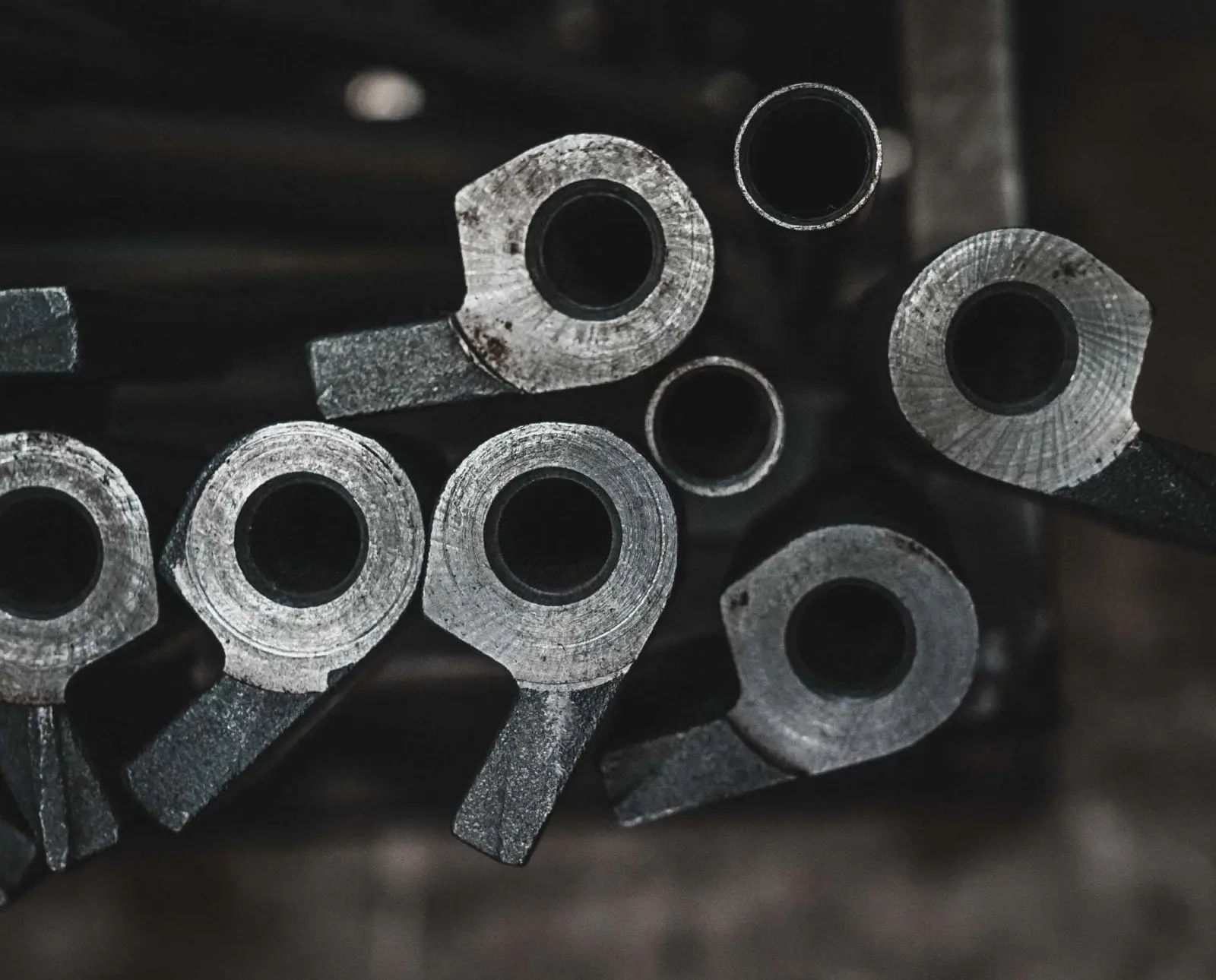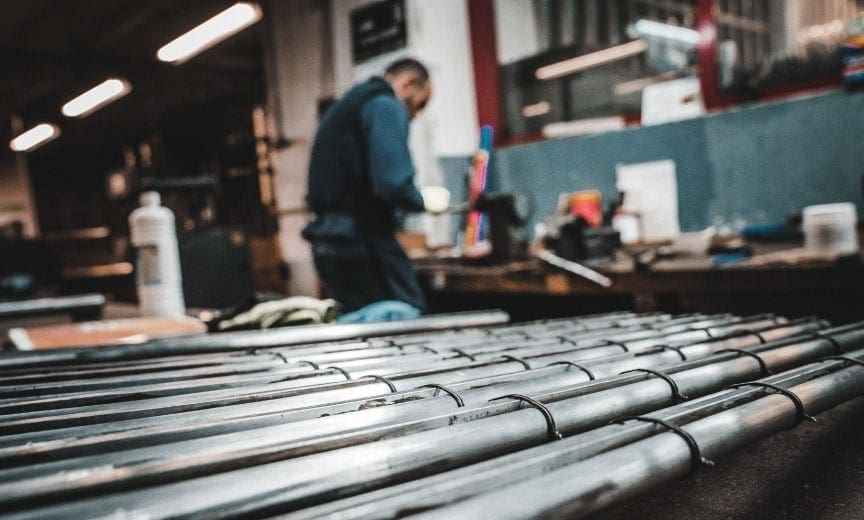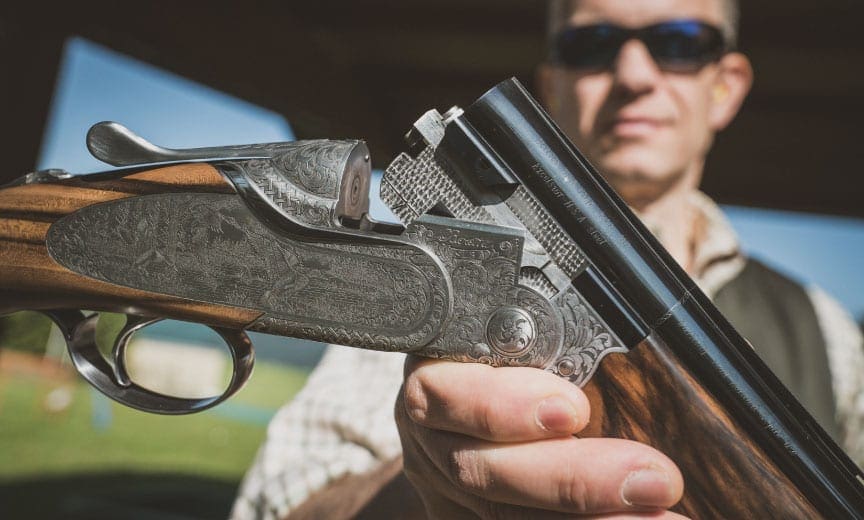Home » Firearms and Shooting » Shotguns » What is the Difference Between Demi-bloc and Monoblock Barrels?
What is the Difference Between Demi-bloc and Monoblock Barrels?

A.J. DeRosa, founder of Project Upland, is a New England…
Exploring the barrel making process for double-barreled shotguns
The first time I heard the word demi-bloc, I was standing on the production floor of AYA shotguns in Spain shooting a film. I am admittedly something of an amateur when it comes to double guns.
“If it hits birds, that works for me,” is about as advanced as I knew growing up. Looking back, I had shot some guns with demi-bloc barrels. But past my initial curious, “Did this gun hit anything?” reaction, I never investigated. So, on this day I continued my deeper dive into understanding the technology of shotguns—barrels being unquestionably one of the more important parts!
At its basic core, “demi-bloc” refers to a method of barrel construction and is sometimes referred to as “chopper lump.” The more popular method is called “monoblock.” What is interesting here is the etymology of the word. “Demi” means “two” (half) and “mono” means “one.” That would instantly lead one to believe (at least me) that one sounds better than two. And that is not necessarily the case, nor (as it turns out) even an accurate mental picture.

In the case of a demi-bloc barrel, it’s formed from two solid pieces of steel joined together to create a double-barrel shotgun. The continuous metal grain that occurs along the whole length of the barrel produces a stronger final product. The process of joining the two barrels is very much the handiwork of highly-skilled craftsmen. On the floors of AYA, the barrels were joined with silver (although I did expect to see them melting the equivalent of my grandmother’s silverware down somewhere, it was actually long pieces of silver wire).
If you look closely enough on a side-by-side shotgun, you can see a very thin line (up and down) between the barrels at the breach when opened. This is where the barrels were joined. Monoblock, which is the common way to make over and under shotguns, can be a little easier to detect. A single piece of steel is used to create the monoblock, essentially from the base of the chamber to the end of a shotshell. The barrel tubes are then joined into that single piece which creates a visible joint (sometimes hidden with engraving) on the outside of the barrel. Back to the deception of etymology, the demi-bloc is in fact two pieces for the whole barrel process, whereas the monoblock is three. Go figure. However, monoblock allows for the use of two different types of steel while the demi-bloc is restricted to one.

Demi-bloc has its biggest advantage in strength. The “bite” of the shotgun joins both halves of the barrels to give added support when a cartridge ignites. Add in the continuous metal grain and, by definition, it becomes a superior product.
Now, all this makes demi-bloc seem like the coolest kid in school, and maybe back in the day, that was more accurate. The reality is that between the quality of steel and the computer-automated precision of monoblock construction, the level of tolerances that can be perfected on a monoblock is truly a modern marvel. Still, the idea of the hand-constructed craftsmanship of a demi-bloc barrel has a certain level of nostalgia while still being mechanically sound.

This whole process can also apply to over-and-under shotguns by simply turning everything on its side. That, however, can call into question the significance of the strength of demi-bloc construction. The bite no longer holds both barrels, the top barrel being reliant on the braze between the barrels.
Some gunmakers, like the Italian shotgun company RFM, offer shotguns with choices in both monoblock and demi-bloc.
At the end of the day, it’s the 21st century. There can certainly be personal preferences from demi-bloc to monoblock, but to a guy like myself, it’s tough to feel a real difference when shooting. In the end, the combination of both brand and quality can turn out a really good shotgun using either method.
A.J. DeRosa, founder of Project Upland, is a New England native with over 35 years of hunting experience across three continents. His passion for upland birds and side-by-side shotguns has taken him around the world, uncovering the stories of people and places connected to the uplands. First published in 2004, he wrote The Urban Deer Complex in 2014 and soon discovered a love for filmmaking, which led to the award-winning Project Upland film series. A.J.'s dedication to wildlife drives his advocacy for conservation policy and habitat funding at both federal and state levels. He serves as Vice Chair of the New Hampshire Fish & Game Commission, giving back to his community. You can often find A.J. and his Wirehaired Pointing Griffon, Grim, hunting in the mountains of New England—or wherever the birds lead them.




Nice article explaining the difference between demi-bloc and mono-bloc construction.
A list of makers of each type would have also been very informative.
The process of creating a mono block was invented and patented by Henri Pieper, that much maligned Belgian maker of the late 19th century who was also the founder of and first managing director of FN, the Belgian gun giant of today.
When barrels are “sleeved” in essence, they are turned into mono blocks by using the first 5″ or so of the breech end as the mono block to receive the new barrels.
Great information, James. Thank you!